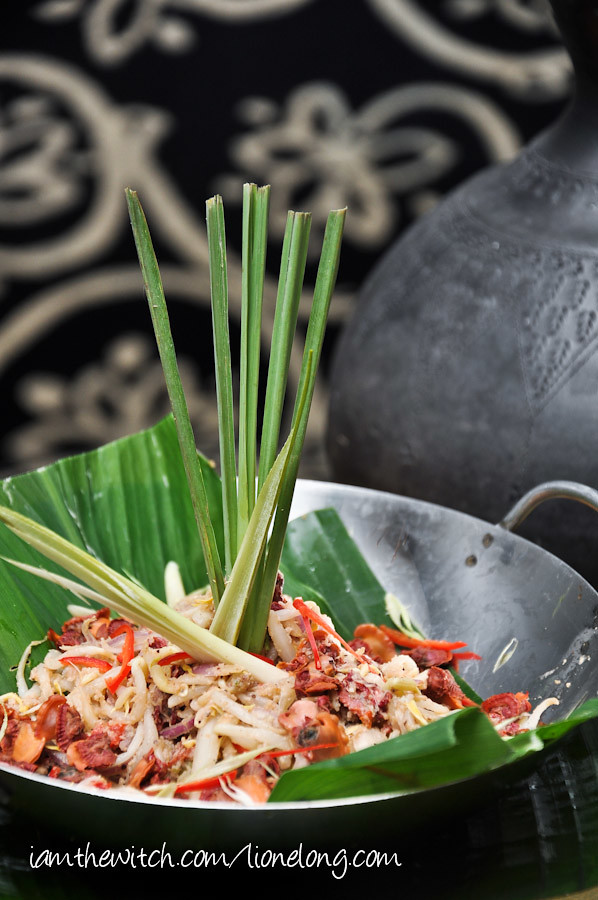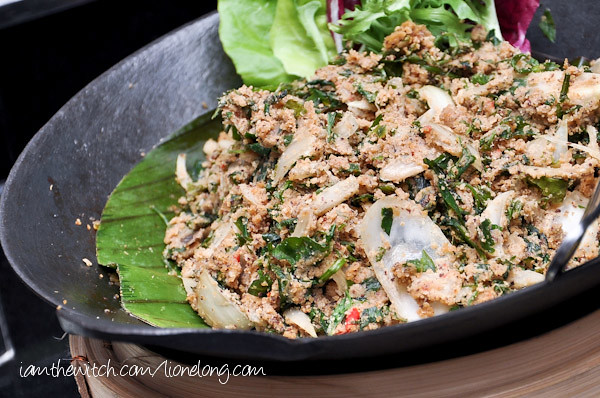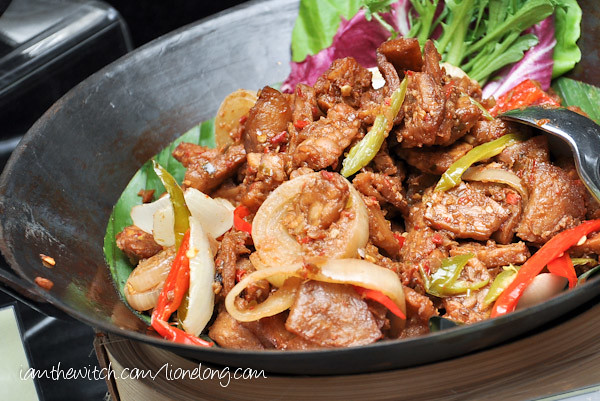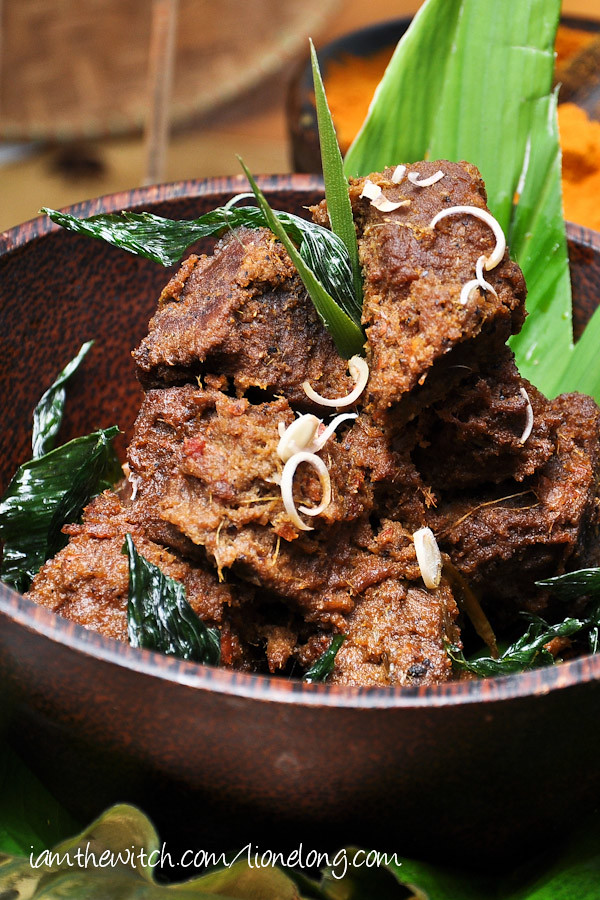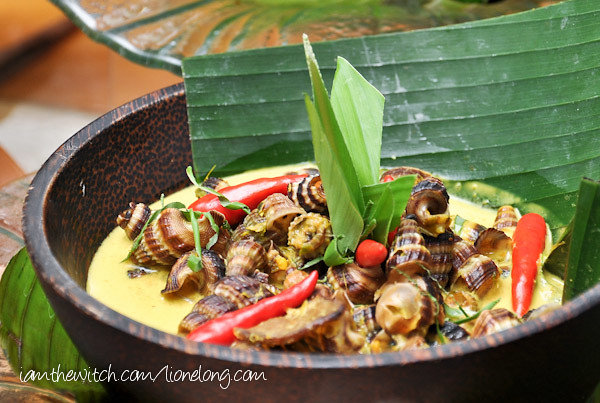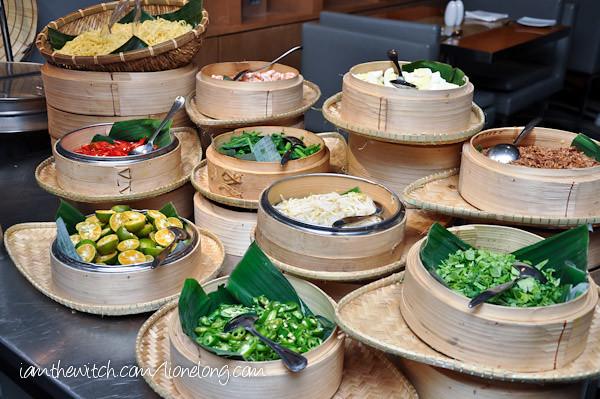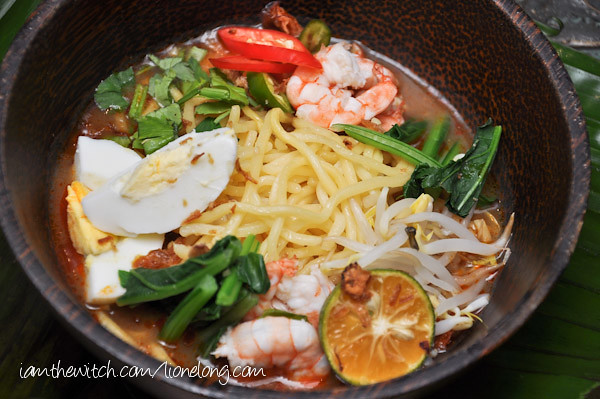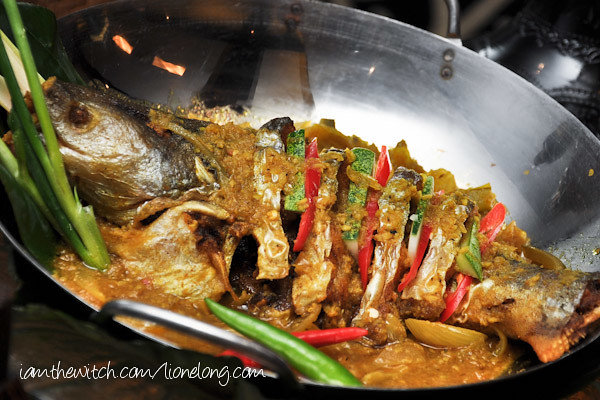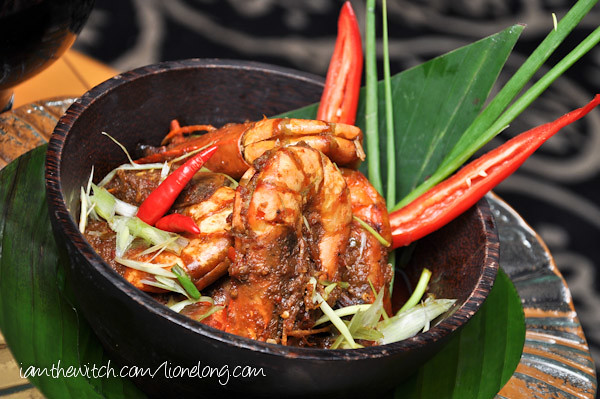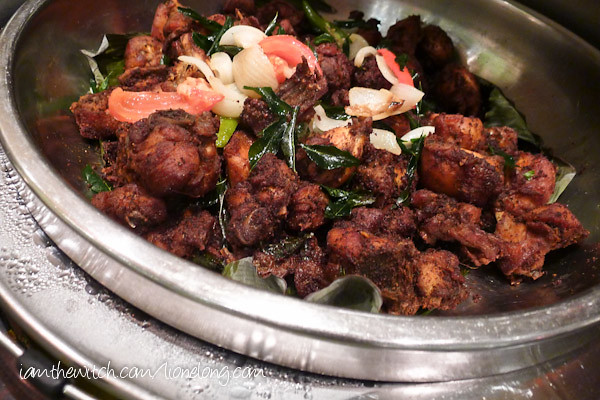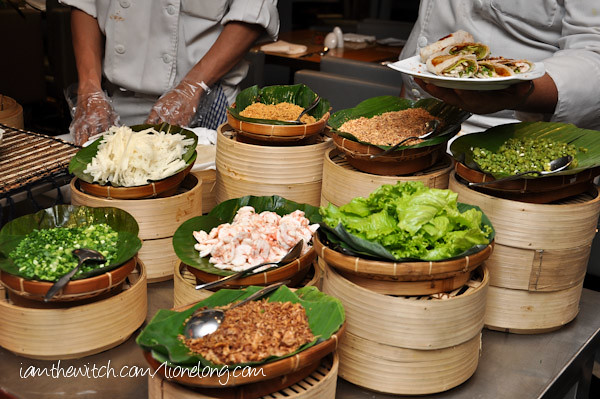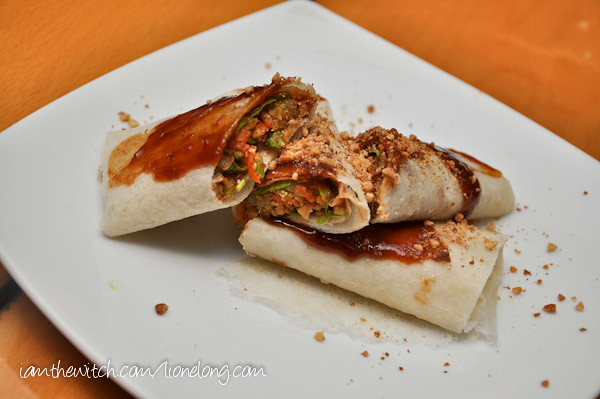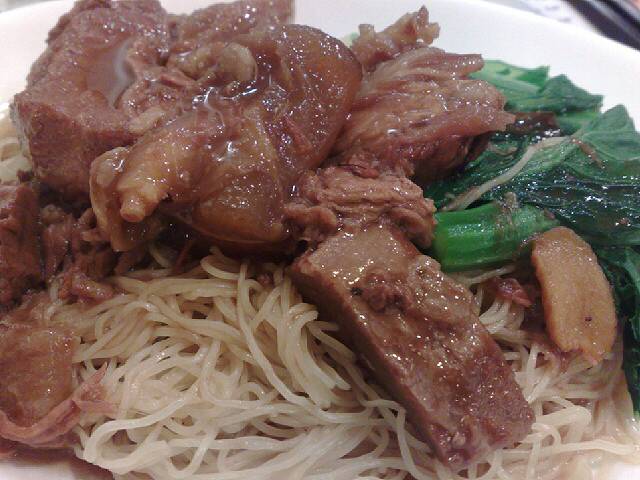“Part of the secret of success in life is to eat what you like and let the food fight it out inside.”
― Mark Twain
Ipoh City, is famously known as food paradise destination in Malaysia and Singapore. The city offers a wide variety of its own exquisite food. Moveover, other unique and authentic cooking style and flavours of the Malay, Chinese and Indian cuisines are also available to tempt one's appetite. The numerous restaurants, coffee shops, food courts, hawkers centre, and fast food chain outlets, which cater to different budget and tastes, ensures that visitors have plenty of choices to choose from. Ipoh also offers various international cuisine including Japanese, Korean, Wastern, Middle East and Thai at specific restaurants. Ipoh surely has abundance of good food available and waited to be explored.
“I am not a glutton - I am an explorer of food”
― Erma Bombeck
Kerabu Pucuk Paku Kerang
This is a cold salad of wild fern shoots (pucuk paku), onions, beansprouts, lemongrass and chilli tossed with poached cockles, giving it a spicy kick perfect as an appetizer.
Kerabu Pucuk Paku Kerang
Kerabu Daun Selom
Daun Selom, also known as water celery or water parsley, has hollow stems and celery-like leaves which smell like parsley. The young shoots are widely eaten as ulam (raw) with sambal, while the leaves are famous for making salads. The Daun Selom salad was fragrant with grated coconut, dried shrimps and onions, while being tangy from the addition of lime juice in it.
Kerabu Daun Selom
Sambal Tumis Tempeh
Tempeh is a product of natural culturing and fermentation of soybeans that bind them into a form of cake. Originating from Indonesia, this ingredient has high content of protein and dietary fiber, making it a popular dish even in Malaysia. The firm texture and strong flavour made it perfect to be cooked with sambal, or chilli-based sauce, creating an appetizer dish with a nice bite.
Sambal Tumis Tempeh
Daging Rendang Tok Bandar Baru Klebang
A dish proudly originating from Perak, Rendang Tok is made from a combination of herbs, spices and most importantly, coconut milk. It is then cooked for hours with beef, resulting in a lovely curry dish. The trick in getting the Rendang Tok right is to cook it until the rendang is dry and a lovely glaze of oil appears. It goes without saying that this dish is extremely flavourful, tender and goes well with lemang or ketupat.
Daging Rendang Tok Bandar Baru Klebang
Siput Sedut Masak Lemak Cili Api Gopeng
Siput sedut, also known as balitong, is a type of snail that is widely used in the Malaysian culinary scene. Half the fun of eating this comes from sucking out the flesh embedded within this snail! A traditional way of cooking this is with coconut milk, turmeric and chilli, resulting in a dish with rich and thick yellow gravy usually eaten with rice.
Siput Sedut Masak Lemak Cili Api Gopeng
Mee Kuah Batu Gajah
Mee Kuah, literally means noodles with gravy, comes in many different forms and flavour, usually distinguished by the type of noodles used and the ingredients of the gravy. The Perak-inspired noodles were very similar to Mee Rebus, made from yellow egg noodles soaked in a slightly sweet and prawn-infused soup, garnished with boiled egg, shrimps and lime.
Ingredients for Mee Kuah Batu Gajah
Mee Kuah Batu Gajah
Isi Ikan Patin Goreng Masak Cuka
Ikan Patin or Silver Catfish is a type of freshwater fish that is highly sought after in Malaysia due to its juicy taste and texture. This controversial fish even made news recently due to its ridiculously high price charged to customers after their lunch. For the Uniquely Perak fare, the patin fish was deep fried and cooked with vinegar, which gave it a sourish tinge and at the same time got rid of the fishy smell – killing two birds with one stone.
Isi Ikan Patin Goreng Masak Cuka
Udang Tumis Jawa Sungai Manik
Sungai Manik is a river located in the small town of Teluk Intan in Perak, which apparently got its name from the abundance of beads (manik) found on the banks of the river in the ancient times. The dish of Udang Tumis, or sauteed prawns, was cooked with sambal and asam jawa (tamarind), giving it a slight spicy and sour taste that complemented the succulent prawns very well.
Udang Tumis Jawa Sungai Manik
Ayam Goreng Berempah Batu Gajah
Fried chicken with spices is a popular dish among the Malaysians, and what differentiates one from the other is the type of spices used. The Batu Gajah inspired fried chicken was fragrant with curry leaves, turmeric, ginger and onions, among others. It would have been nicer if these were served with crispy skin but I suppose that’s a challenge when food is prepared in advance.
Ayam Goreng Berempah Batu Gajah
Popiah
Popiah, also known as spring roll, is made from paper-thin flour crepe filled with a variety of ingredients and rolled into a cylindrical shape. Popiah in Perak is filled with mainly jicama (sengkuang in Malay), lettuce, fried shallots and topped with plenty of peanuts.
Popiah Station
Popiah
Bean Sprouts Chicken
Also known as nga choy kai or tauge ayam, this is arguably Ipoh's most famous dish. It consists of chicken meat, assorted chicken innards, and locally grown beansprouts blanched in water dressed with soy sauce and sesame oil.
Beef brisket noodles
Noodles, usually served on its own with a dark soy dressing, accompanied with stewed beef brisket cooked in the traditional Cantonese manner with daikon and selected spices in a clear broth.
Chee cheong fun
A popular breakfast item, this consists of large pieces of flat rice noodles rolled up and served with sweet or spicy sauce. Unlike the chee cheong fun in Kuala Lumpur, chee cheong fun in Ipoh is served with minced pork and mushroom sauce, preserved green chilli, a sprinkle of deep-fried shallots and sesame seeds. Some eateries even serve chee cheong fun with a curried gravy.
Claypot chicken rice
Chicken rice served in a claypot, traditionally cooked with charcoal. Typical additions include salted fish and lap cheong. Bercham, a suburb in Ipoh is famous for claypot chicken rice.
Curry chicken bread
A bread or bun bowl filled with mild curried chicken. A specialty of the neighbouring towns of Kampar and Lukut, it is now widely available in Ipoh.
Curry Mee
A bowl of thin yellow noodles mixed with bihun in a spicy curry soup enriched with coconut milk, and topped with tofu puffs, prawns, cuttlefish, chicken, long beans, cockles and mint leaves, with sambal served on the side.
Dry curry mee
Blanched noodles tossed with soy sauce, then subsequently poured on with some curry gravy. Dry curry nosually accompanied by slices of shredded chicken, char siu cockles, and sometimes siu yuk.
Fish ball noodles
Noodles served with round, spherical bites of fish paste steeped in a light broth on the side. Local variants may include tiny versions of fish balls (Chinese : 鱼丸仔), or the inclusion of sides like pork meatballs with cuttlefish bits and stuffed tofu skin rolls as accompaniments for the noodle soup. Another variant calledhor hee (Chinese : 河嘻), which is the Teochew term for fish ball, is also found in certain eateries in Ipoh. Hor hee is a Teochew-style noodle soup, with small fish balls, sliced fish cakes, preserved vegetables, bean sprouts or shredded lettuce, and savoury fish dumplings in a fish-based broth.
Ipoh laksa
Laksa served in Ipoh is very similar to Penang style assam laksa, differing only in the garnishes used.
Salt-baked Chicken
This traditional Hakka dish is prepared by wrapping a whole chicken with grease paper together with salt and certain Chinese herbs and baked for several hours. With this cooking technique, the meat will not lose its tenderness and the essence of chicken can be preserved as well. The combination of salt and herbs gives the meat a unique flavor.
Sar Hor Fun
Ipoh is famous for its flat rice noodles, which is prepared with local unfiltered spring water. There are two varieties: Kai see hor fun (Chinese : 鸡丝河粉) is served in a clear chicken and prawn soup with chicken shreds, prawns and spring onions. Chau hor fun (Chinese : 炒河粉) is fried with a little dark gravy, as opposed to Penang char kway teow (炒粿条) which has no gravy but is fried with egg, prawns and cockles. It is also different from Cantonese-style wat tan ho (滑蛋河) which is completely immersed in clear, egg-starch gravy.
Tempoyak
Popular Malay delicacy. It is durian flesh which is preserved by fermentation in an earthenware urn. Commonly eaten with chillis and other dishes; it is well known due to the popularity of its key ingredient, durian, among locals. It is also used as a primary flavouring for gulai or stews.
“Give a man a fish, and you'll feed him for a day. Teach a man to fish, and he'll buy a funny hat. Talk to a hungry man about fish, and you're a consultant.”
― Scott Adams
Ipoh White Coffee
White coffee is a popular coffee drink which originated from Ipoh. It is traditionally taste, very aromatic, frothy and tastier than the normal coffee. The secret is the coffee beans are roasted with palm-oil margarine and the resulting coffee is served with condensed milk. The white coffee was first introduced in the 1900s by Chinese migrants who came to work in the local tin mines. You can a find the traditionally taste white coffee drinks at Chinese restaurants in the old town area.
Pamelo
Ipoh’s most famous fruit is pamelo, a large juicy citrus fruit. The best and juiciest pamelos are reputed to be from Tambun, a small town located east of Ipoh, where there are endless stretches of pamelos farms. The fruit is quite similar with grapefruit as they originate from the same citrus family and the main difference is pamelo is not as bitter as the grapefruit. There are stretches of stalls selling pomelos along Jalan Raja Nazrin Shah (Jalan Gopeng) adjacent to Sam Po Tong temple.
“Kacang Putih” (Indian spiced snacks and nuts)
The term “kacang putih” is used by most Malaysian to refer to variety of Indian spiced snacks and nuts. A small township located west of Ipoh, Buntong is home to country’s most quaint kacang putih village, aptly named Kampung Kacang Putih. Here, large cluster of families manufacture their own secretly guarded recipe of kacang putih within the compound of their home. It is no surprise then that most of Ipoh’s and country’s freshest and most delicious types of kacang putih come from Buntong
Ipoh Fragrant Biscuit
 The most famous biscuits in Ipoh and these traditional biscuits feature a sweet paste within its flaky skin. It was traditionally hand-made but now it is mass produced to cater for large demand. These biscuits are easily available at biscuits and confectionery stores in the city centre.
The most famous biscuits in Ipoh and these traditional biscuits feature a sweet paste within its flaky skin. It was traditionally hand-made but now it is mass produced to cater for large demand. These biscuits are easily available at biscuits and confectionery stores in the city centre.
“I had a missed call. It’s probably the all you can eat buffet calling to say,
“Come back! We know you can eat just a little bit more.”
”
― Jarod Kintz, At even one penny, this book would be overpriced. In fact, free is too expensive, because you'd still waste time by reading it.
Thats all from me, I hope you can gain some information about food that may have in Perak. Last word from me, “Food is symbolic of love when words are inadequate. ”
Thank you.








